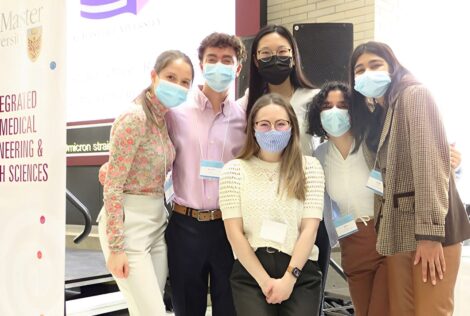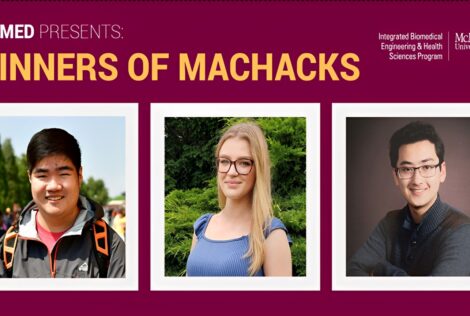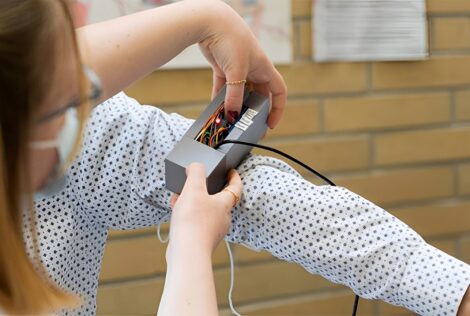
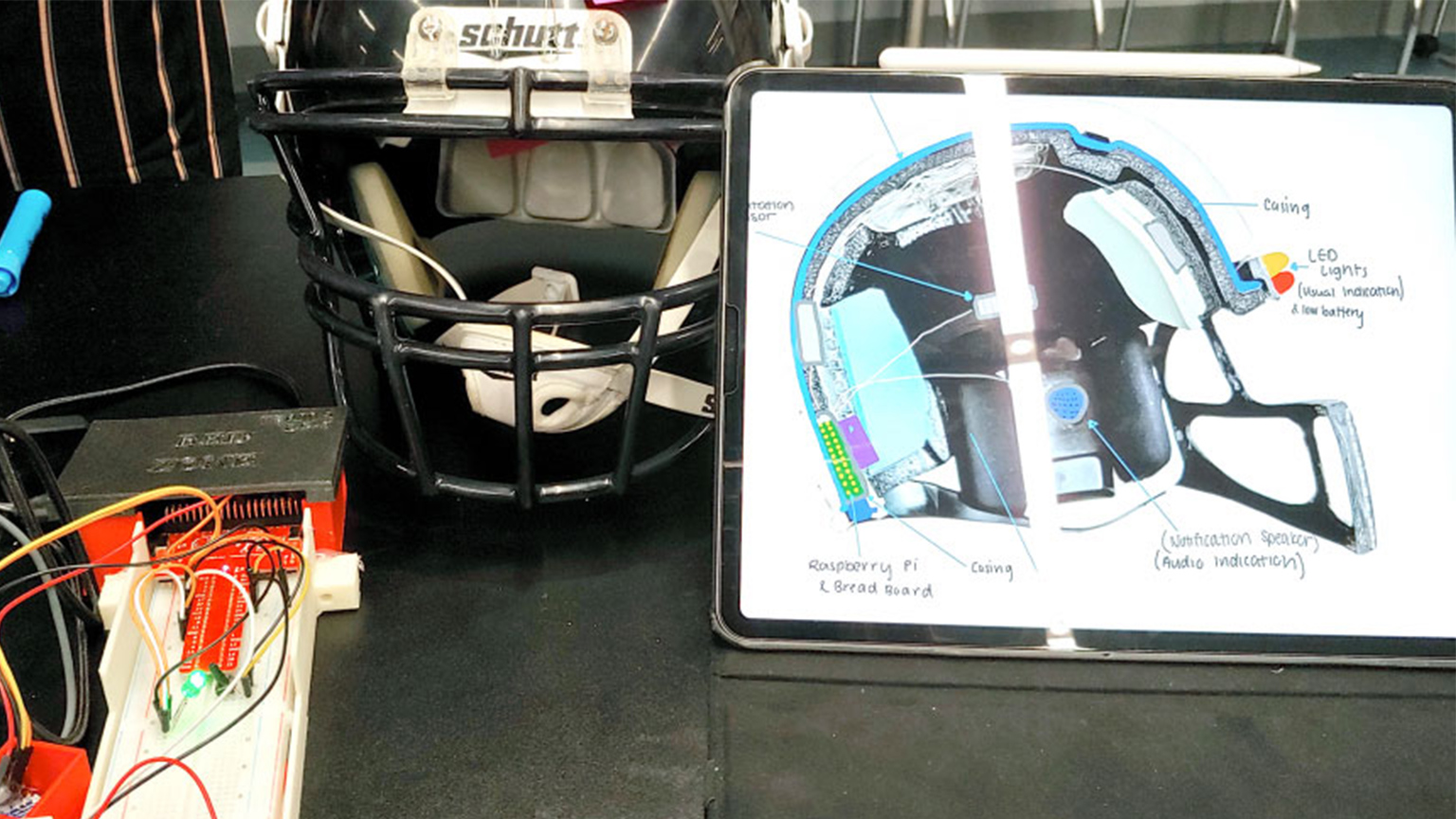
From concussion helmets for football players to reducing driver fatigue, first-year iBioMed students show they are up for the challenge with their innovative healthcare solutions.
This past Friday was the IBEHS 1P10 Design Expo. 1P10 is a first-year course unique to the iBioMed program. In teams, students collaborate on five different design projects throughout the year, each design project having different deliverables and requiring solutions to real world healthcare problems.
Friday’s Design Expo highlights design project 3, where students are required to create a tracking and monitoring device. Each team is given 10 to 15 minutes to explain its design, demonstrate the prototype and answer questions from the judges.
It’s hard to pick just a few, but here are some great project examples from this year’s 1P10 Design Expo:
Danger Zone
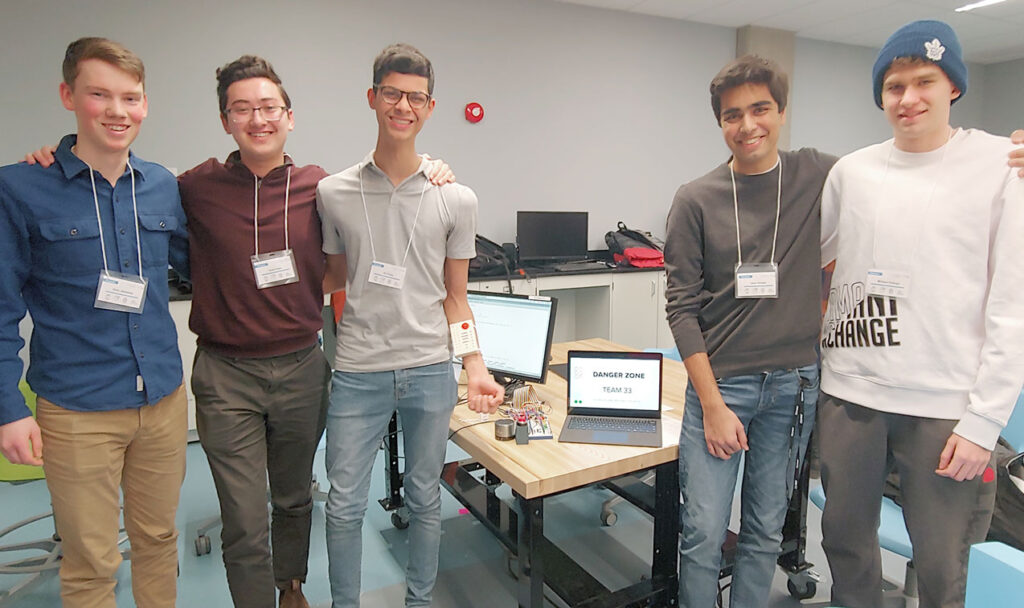
Inspired by the Australian fires, this team created an entry-level gas concentration sensor. What makes this sensor unique is its intuitive design. Depending on the gas levels, an LED lights up on the device. Each LED is labelled indicating the kind of gas that is being detected (CO, H2, Propane, Butane, Methane or Ethanol). The user simply needs to look at the LED and its corresponding label.
Red Zone
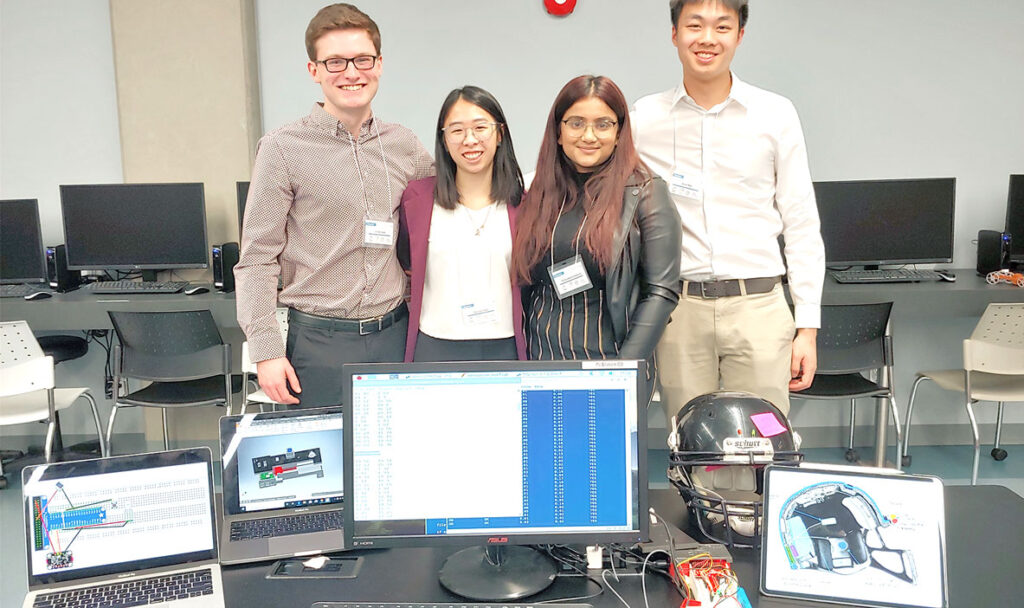
This team took inspiration during Superbowl season and created a concussion helmet for football players. It measures the whiplash motion associated with being hit. Depending on the severity, one of two LED lights on the front of the helmet light up indicating the level of injury and if the player has received, or is in threat of receiving, a concussion. This information could then be automatically sent to a coach on his or her mobile device.
Reducing Driver Fatigue
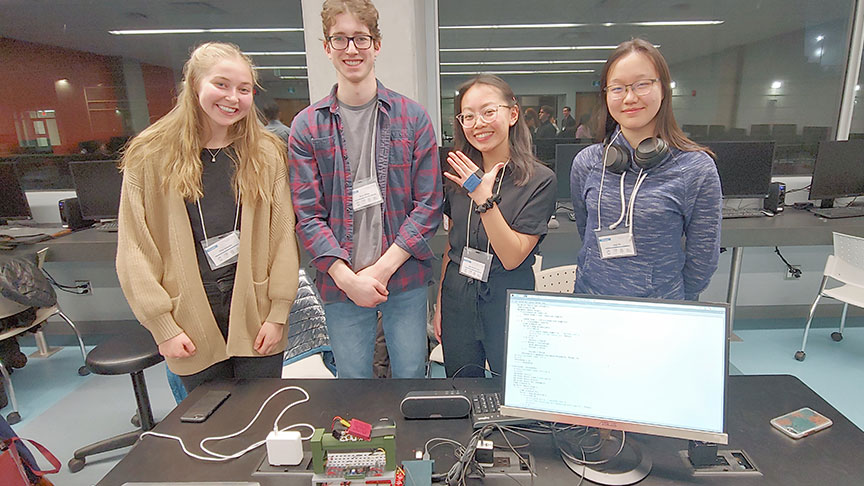
The number of collisions caused by driver fatigue is this team’s inspiration. This device tests driver alertness. It’s a band that’s attached to the driver’s hand, and it periodically gives off slight vibrations. Once the driver feels this vibration, they have a certain amount of time to indicate their alertness by squeezing the band and steering wheel. The longer it takes the driver to react, the more frequently the driver will be prompted for a response. If there is no response, an alarm will sound to wake up the driver.
Early Detection of Alzheimer’s
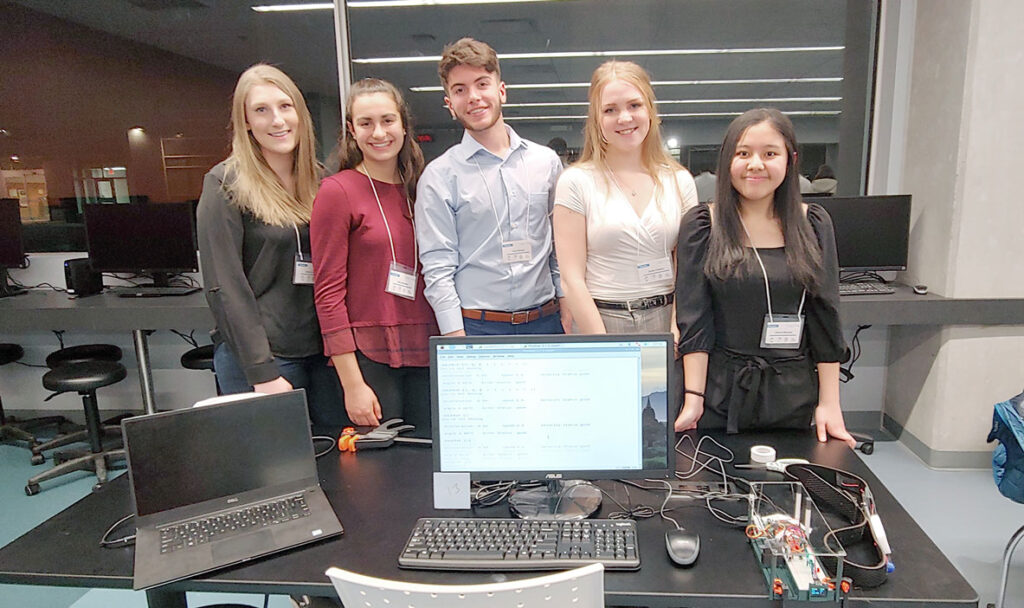
One project dealt with early diagnosis of Alzheimer’s and lewy body dementia by measuring the user’s gait. This device takes on the form of a belt and would be used by doctors and healthcare practitioners during patient check-ups. This team’s research suggests that a change in a person’s gait can be an early indication of Alzheimer’s, so they created a device that can track and monitor any significant changes.
With so many different projects and perspectives, students were excited to share their favourite aspects of this project and first-year
iBioMed in general.
Here are some highlights so far for first-year iBios:
- Learning coding and cadding
- The ability to come up with a concept and create a finished, working prototype
- Working with Raspberry Pi’s, sensors and 3D printers
- Research and independence
- The real-world relevance of 1P10 design projects
- Freedom to define their own challenges and solutions with design project 3
- iBioMed’s tight-knit community
- Support from upper-level iBioMed students
- The opportunity to work as a group
- The hands-on approach to learning within the program
- Learning about the engineering design process
Want to learn more about iBioMed students’ innovative healthcare designs?
Read about last year’s design projects here.

